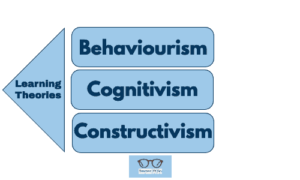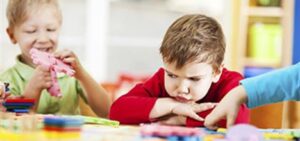During my Bachelor of Education in 2017 in India, I learned about key education theories like behaviorism, cognitivism, and constructivism. These theories became the foundation for how I understand how students learn. When putting them into practice, it means using positive reinforcement for good behavior (behaviorism), creating activities that make students think (cognitivism), and encouraging interactive learning where students build knowledge together (constructivism). So, my teaching philosophy is a mix of these approaches, using various strategies to support different ways students learn and creating an engaging and lively learning environment.

In my current role as an early childhood educator in Canada, I have the incredible opportunity to shape the learning experiences of young minds. I find merit in incorporating aspects of different learning theories into our daily activities at the daycare. We seamlessly blend principles from cognitivism, constructivism, and behaviorism to ensure a holistic development experience for the little ones. By embracing cognitivism, we create activities that stimulate cognitive processes, encouraging children to explore and comprehend the world around them. Through interactive games and hands-on experiences, we foster a constructivist approach, allowing kids to actively engage, collaborate, and construct their understanding of concepts. Additionally, behaviorism principles come into play as we provide positive reinforcement for desired behaviors, establishing a structured environment that supports skill acquisition and social development. Whether it’s a captivating storytelling session sparking cognitive curiosity, collaborative art projects promoting constructivist exploration, or a reward system encouraging positive behaviors, our activities are thoughtfully curated to encompass the richness of these educational theories, nurturing well-rounded growth in our young learners.”


In my daily routines with the daycare children, I notice the influence of behaviorism theory. This approach emphasizes face-to-face interaction, which is evident in my practices. I apply behaviorism principles when teaching social norms and expected behaviors. Unwanted actions lead to “time outs,” while positive actions receive verbal praise or visual rewards like sticker charts. As a teacher, when children want to talk in class, I ask them to raise their hands. When we’re walking in the daycare, we go in a line. These are examples of behaviorism in my class. These skills are important because, in life, you often have to wait in lines, like at the bank or grocery store. Also, raising hands ensures everyone gets a chance to share, instead of just a few students answering all the time. It’s like taking turns. And, by reviewing and testing, we make sure children are learning and meeting the goals in the curriculum.
In my day-to-day teaching at the daycare, I heavily incorporate the principles of cognitivism theory, particularly when it comes to teaching alphabet recognition and sounds to the children. According to Ertmer and Newby, this theory views individuals as active participants in their learning process. In line with this, I utilize instructional methods such as explanations, demonstrations, and illustrative examples, which align with guiding student learning effectively. I apply these principles in our activities using engaging tools like play-doh, alphabet pretzels, Alpha-Bit cereal, and sidewalk chalk. These strategies have proven to be successful, although it’s essential to note that the children I teach don’t experience cognitive delays, and our setting is less prone to extensive distractions compared to a classroom environment.
I conclude with thoughts on the constructivist theory, which, in my view, heavily relies on understanding each learner and their unique experiences. As educators, our goal should be to cultivate teaching methods that resonate with learners, considering their individual backgrounds. However, in classrooms marked by socio-economic, racial, cultural, and sexual diversity, this poses challenges. How can educators effectively implement constructivist approaches when learners’ experiences are so varied? Addressing this question is crucial to creating inclusive and meaningful learning environments that cater to the diverse backgrounds of students.
Looking back on my teaching journey, I’ve noticed big changes in how I think about teaching and what I do in the classroom. When I started, I had certain ideas about how to teach based on theories like behaviorism, cognitivism, and constructivism. But as I worked in different classrooms with diverse children, my beliefs about teaching shifted.
Dealing with children from different backgrounds made me realize that a one-size-fits-all approach doesn’t work. Each student is unique, and I needed to adapt my teaching to meet their individual needs. This made me more committed to creating a learning environment where everyone feels included and where learning is meaningful.
Facing challenges, celebrating successes, and taking part in training have been crucial in shaping my beliefs. I’ve learned that being flexible, always learning, and putting children at the center are keys to effective teaching. As I keep going in my teaching journey, I’m open to new ideas and ready to learn about emerging teaching theories. Education is always changing, and I believe in adjusting my approach to provide the best learning experiences for my children.

Navneet i loved your post, Your journey as an educator beautifully illustrates the evolution of teaching philosophy and the importance of adapting to the diverse needs of students. Your integration of behaviorism, cognitivism, and constructivism reflects a thoughtful approach to fostering holistic development in young learners. Embracing flexibility, continuous learning, and prioritizing student-centered environments are hallmarks of exceptional teaching. Your commitment to inclusivity and meaningful learning experiences sets a powerful example for educators everywhere. Keep embracing change and innovation, as your dedication to enhancing education ensures a brighter future for your students. Good read. Thanks!
Hi Navneet,
I like your blog post.
Your reflection on integrating various learning theories into your teaching practice is inspiring. It’s evident that your approach is deeply rooted in understanding and adapting to the unique needs of each child. Your commitment to inclusivity and continuous learning reflects the essence of effective teaching. Keep embracing new ideas and evolving to provide the best learning experiences for your students!
happy to read your blog post navneet and your experiences in implementing different learning theories considering the dynamism of your learners. And your thoughtfulness about – creating inclusive and meaningful learning environments that caters to the diverse backgrounds of students – is praiseworthy
Thanks for sharing